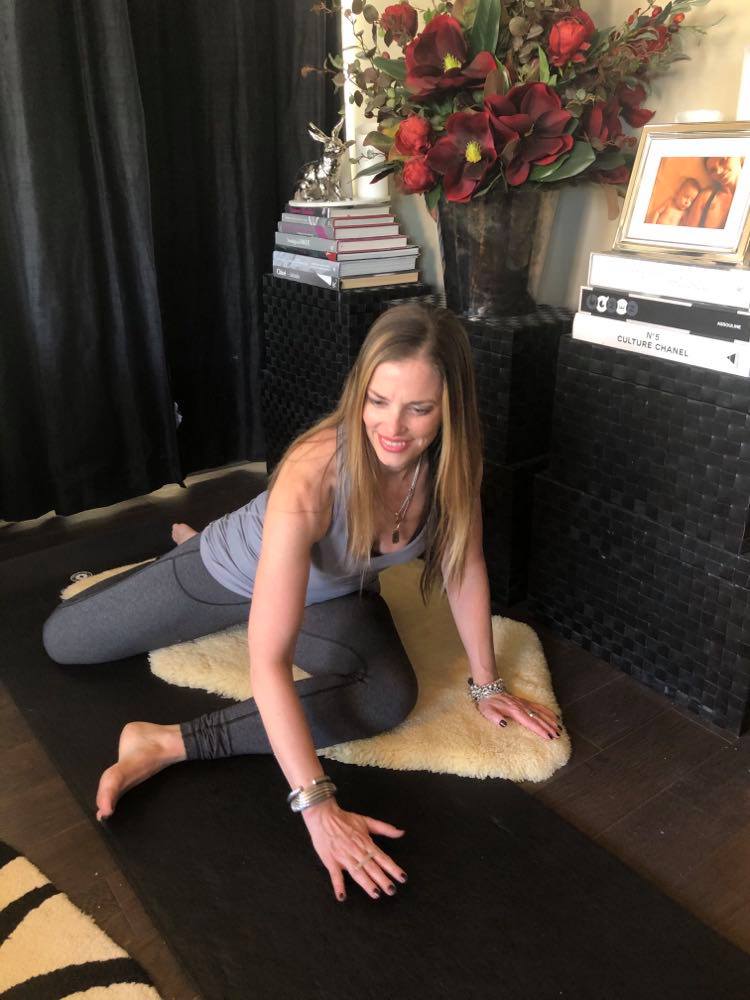View this post on Instagram
At age 2 or 3, I was already ambitious.
It was my idea to climb over a fallen tree stump that I simply could have walked around. I was determined to go over it. (At that age, my drive was bigger than my body.)
Rather than help, support, encouragement, or a helping hand to lift me over the stump, I was the subject of laughter.
I was not amused by being laughed at and wanted to climb over the damn tree. I grew furious and started wailing, both out of frustration for not getting over the stump and being left physically and emotionally to my own devices.
My fists gathered into little balls, my shoulders tensing and rolling forward, my neck and jaw compressing; I took the physical stance of a little fighter. A sensation in my body that became my norm.
Consistently lacking emotional support for our needs throughout developmental years, the baseline that feels like “normal” in the body is: stress, tension, and compression.
Childhood emotional trauma manifests as movement dysfunction, disorders, body aches, and chronic physical pain in our adulthood.
We may have back pain, sciatica, plantar fasciitis, and other non-impact-injury ailments.
Our bodies will burn, sear, and complain.
Very little in our traditional medical culture connects these adult physical ailments with childhood trauma. We did not fall or get hit, so it appears that we hurt for no reason. X-rays, MRIs, and scans often find nothing “wrong.”
Much of this appears as symptoms commonly blamed on “aging,” however, it more closely resembles repetitive strain syndrome.
And it is.
These are the physical aches and pains caused by the patterning we adopted as children trying to hold ourselves up against the mental-emotional anguish of our childhood.
As a child, I was stressed out a lot.
I was always ready for a metaphorical battle and was so conditioned toward experiencing emotional pain that I consequently barely noticed physical pain, even when it later caused dysfunction.
As an adult, through bouts of rib and knee problems, I would see practitioner after practitioner who could find nothing clinically “wrong.” Therefore, no help was available for my chronic rib dislocations or bouts of runner’s knee.
I didn’t see the commonality until I became a practitioner myself: childhood emotional trauma leads to movement patterns in adults that lead to physical pain.
Most of us are so used to the sensations of clenched fists and tight jaws that we don’t even remember what space or freedom in our bodies felt like. Not only might the sensations of freedom in our body predate our memories, but it’s also difficult to feel “space” when we are used to the sensations of tension and stress.
We often don’t notice our bodies and minds are perpetually prepared for battle.
Most of us can feel the burn of exercise, but do we know the freedom of absence or space if we’ve been compressed since childhood?
Under emotional stress, we always assume a position of tightness in our joint spaces: curling our bodies into a smaller shape, shrinking, and rolling inward. Compressing our joints and physically shrinking are tools we naturally and subconsciously adapt to protect ourselves.
At a young age, we relied on this; when our bodies are bound by physical protective compression, we think we’re not open to being hurt.
Many of us have no idea that this compression shapes our movement patterns later in life. These patterns became ingrained in our movement and perceptions at a young age, becoming the baseline for what “normal” feels like in how we move and what we experience.
Yet, many of the diseases or diagnoses of inflammation—IBS, fibromyalgia, headaches, or arthritis—that I address for clients in my practice are made better (or completely healed) by repatterning how we move. This starts with restoring space to the joints and, more importantly, in becoming aware of the sensations of freedom in our bodies.
We don’t always need medication, surgery, injections, massages, needles, or doctors.
We need to allow our muscles and joints the spaciousness they require. We need to restore freedom in our bodies and recover the authenticity of movement that we were granted at birth.
This process of repatterning the body means creating a new blueprint for what our body can feel like.
We can do this irrespective of our age. A no-prop way to experience an example of this is through the Deer Pose or Pinwheel, which is found in the yin yoga repertoire.
While we are used to focusing on the sensations during the exercise, this particular work is about focusing on the sensations in the absence of exercise. Our goal is to experience the sensations of space rather than the sensations of tension, pulling, stretching, or working.
Positioning ourselves on the floor, with the back and front legs both bent, we can lean forward until we feel a stretch in the glute for five minutes.

We hold this position for five minutes.
During the exercise:
>> Can we feel the bones in our legs? Our pelvis?
>> Can we feel the space that is created between the two by way of traction? Can we describe, using words, specifically where we feel the sensations of opening, traction, or length?
What matters most is not the position of the body in the exercise, but in what we can notice and name during the posture and the space we can be aware of after the posture.
Once we come out of the position, we lie on the floor and focus on our body, asking ourselves the following questions:
>> What do we feel in the body, and where do we feel it?
>> What sensations do we notice on the side we just did? How does that compare or differ from the other?
>> If we stand or walk, what experience do we have when we move the leg in the pelvis on that side of the body? Can we feel the space we have created? What does it feel like when we remove the compression?
A lack of emotional spaciousness in childhood will typically lead to a lack of physical space in our adult bodies.
We can use these questions and inquiries as a conscious tool to help us permanently remove the aches and pain from our lives by way of daily practice.
We can learn what it feels like to release our bodies from the compressive fury, anger, and fighter stance we took as children and consciously learn what it is to feel space and freedom instead.
And we get to keep the part we want to retain: the badass drive we’ve always had to get over the d*mn stump.
 Share on bsky
Share on bsky





Read 37 comments and reply